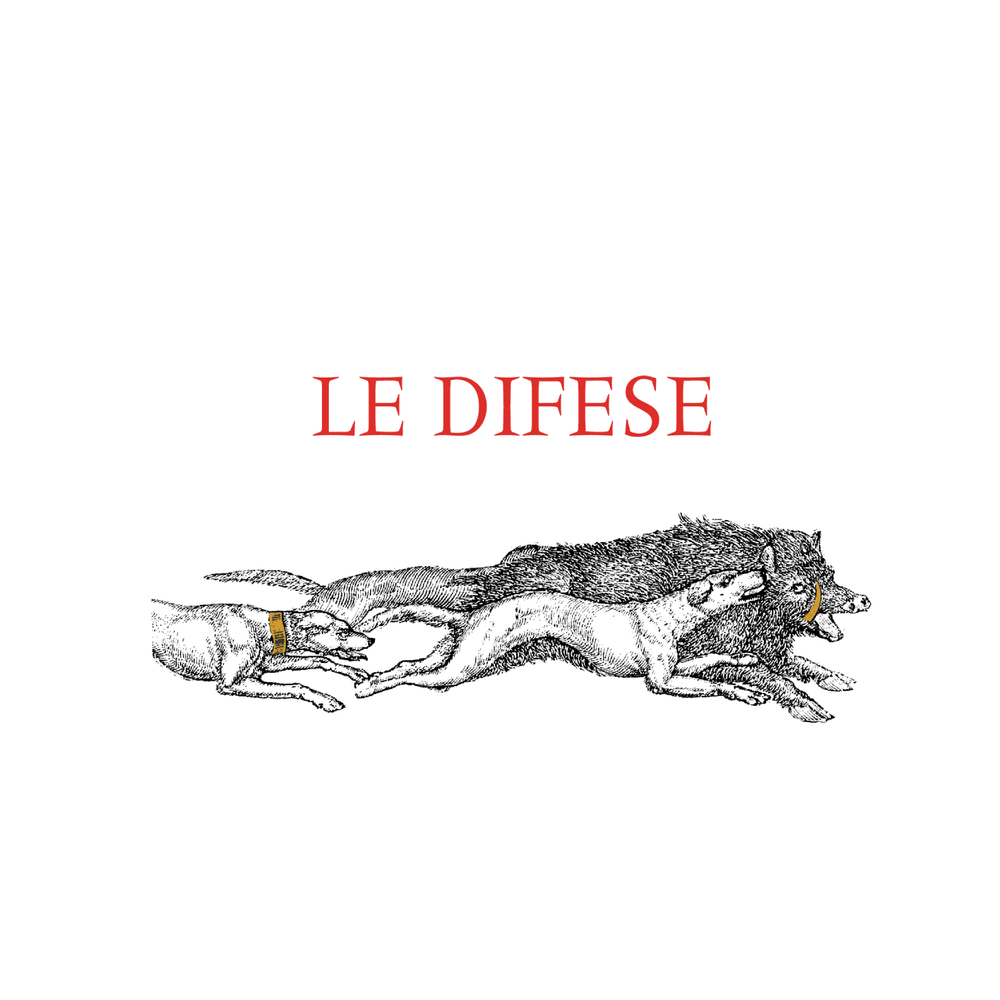Data Sheet
LE DIFESE 2018
CLASSIFICATION
IGT - Toscana
FIRST VINTAGE ON THE MARKET
2002
GRAPES
Cabernet Sauvignon, Sangiovese

Le Difese
SOIL STYLE
The soils on which the vineyards stand has varied and complex terrain features with a strong presence of limestone, feature areas rich in marl and pebbles as well as being partly clayey; they sit at an altitude of between 100 and 300 metres above sea level, with a south/south-west exposure.
WEATHER TRENDS
Autumn and early winter were characterised by temperatures above the seasonal norm with occasional rainfall, sometimes in the form of floods. This situation continued until February, with more intense rainfall and some snowfall at higher altitudes. What radically changed the situation was 'Burian' from Siberia, which in the last week of February caused temperatures to plummet to well below zero, with Bolgheri experiencing some snowfall. From an agronomic point of view, it was excellent, bringing about vegetative halt and eliminating vine parasites, and replenishing water reserves. From March, temperatures tended to rise again, but soon after a further wave of frost affected the whole of Italy and in particular, the Tuscan coast, characterising a March and early April with temperatures below the seasonal average and rain. From the second ten days of April, spring arrived with rising temperatures and sunny days. May began with rainy and windy days. Throughout the entire spring period until late summer, temperatures remained normal, without excessive heat and with occasional rainfall that favoured the phenological phases of flowering and fruit development perfectly. It was only in July that the heat became intense, albeit with good night-time ventilation, and this situation continued until before the August bank holiday, because from 14 August a downpour of heavy rain brought coolness to the vines and normalised the temperatures. Sunny days, cool temperatures (especially at night) and the absence of sea breezes meant that the phenolic ripening of the grapes was excellent, with the aromas and acidity developing well.
HARVESTING
Harvesting, strictly by hand, began on 16 September with the Cabernet Sauvignon and was completed in the first week of October with the Sangiovese. Production was slightly lower than average, but of excellent quality. Obviously, the weather conditions that characterised the vintage, and above all the phenolic ripening period, resulted in healthy grapes with a lower sugar content, but favouring their aromaticity. Healthy, well ripened grapes arrived in the cellar giving rise to a balanced must, suitably flavoursome and in perfect harmony between the wine's anthocyanin structure and acidity. Excellent balance in terms of acidity, PH and structure are the main characteristics of this 2018 vintage of Le Difese.
FERMENTATION
Careful selection and sorting of the bunches by hand. Soft destemming of the grapes.
Primary fermentation took place in stainless steel vats at a controlled temperature (27-28°C). Maceration on the skins for 13-15 days for the Cabernet Sauvignon and for about 14-18 days for the Sangiovese, with successive phases of pumping over and frequent deléstage to stimulate aromatic extraction and soften the tannins. Malolactic fermentation was carried out in steel and concluded towards the end of November.
AGEING
At the end of the malolactic fermentation, the wine remains in steel for about 3-4 months and temperatures are kept around 10 ° C. Periodic decanting is carried out to eliminate the sediments. The wine then undergoes an aging in wood, with French oak barriques previously used for Sassicaia and Guidalberto, for an average period ranging from 6 to 8 months. At the end of the aging period in wood, the wine returns into the steel tanks where the temperature is stabilized for about 20 days at around 4-5 ° C for the necessary tartaric stabilization, before bottling.